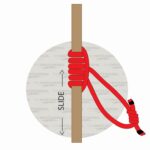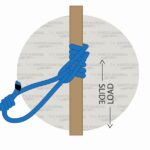The Valdotain Tresse Knot (also called Valdotain Hitch) is common in rock climbing for ascending and descending ropes by friction. It works with ropes and pulley systems and is used by mountaineers, rock climbers, arborists, and search and safety teams.
While the Valdotain Tresse is important for all climbers to learn, executing it properly is essential. Failure to tie this knot correctly can lead to injury or fatalities.
Quick Tying Guide: How to Tie the Valdotain Tresse
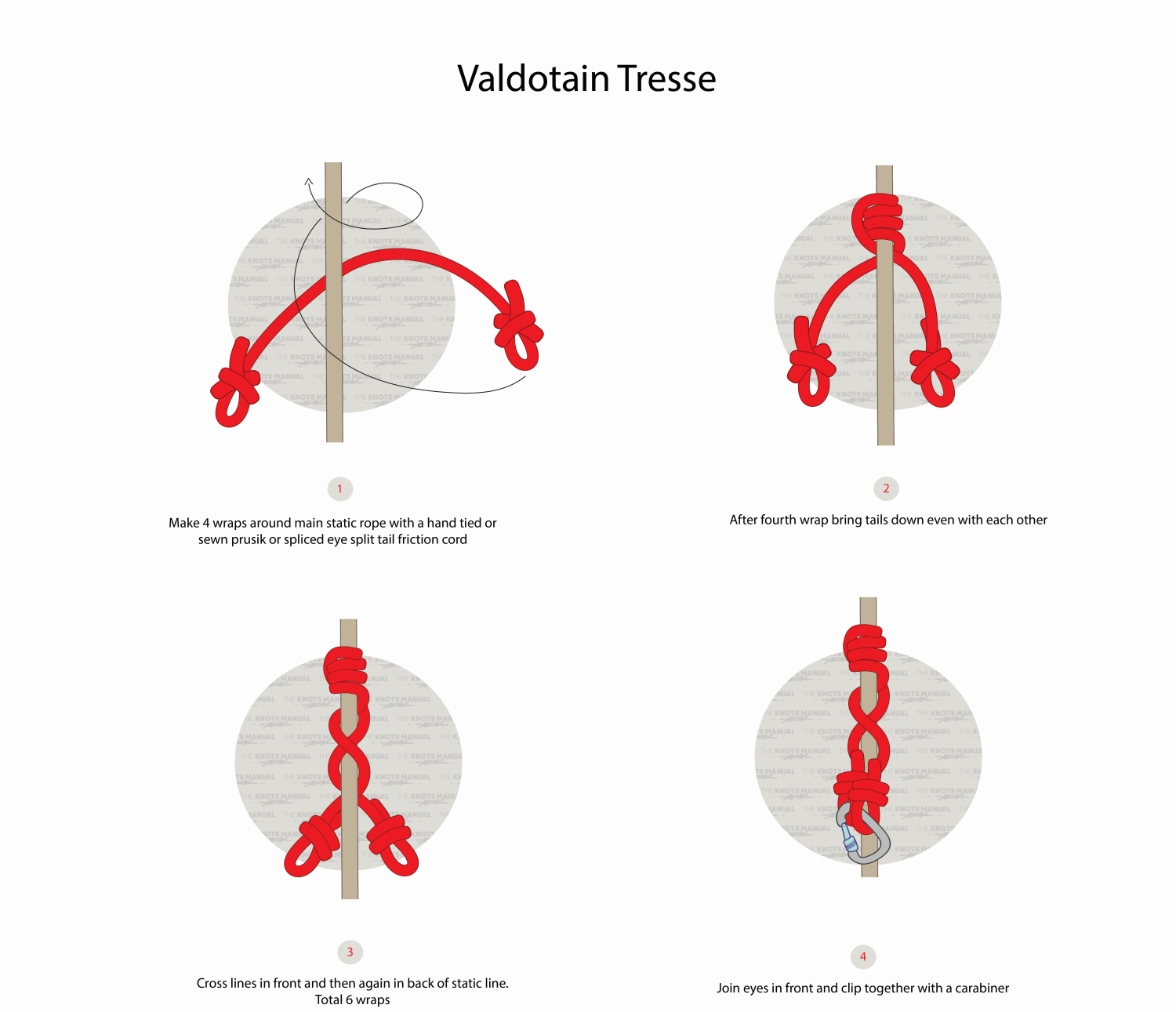
You’ll need a hand-tied, sewn prusik or spliced eye split tail fraction cord for this knot. Make four wraps around the static end. After the fourth wrap, bring the tails down and make sure that they’re even with each other.
Cross the lines in the front and the back of the static line. Pull the eyes toward the front and clip them together with a carabiner.
The Pros and Cons of the VT Hitch
The Valdotain Tresse is an easy-to-tie knot that is reliable for controlling a descent. It’s also easy to release. However, because this knot is used in dangerous situations like rock climbing, tree climbing, and rescue, it’s imperative to get it right. The VT hitch is not a beginner knot—practice in low-to-the-ground situations. If the knot comes undone in dire conditions, the result can be severe injury or death.
Climbing Knots Like the Valdotain Tresse
Klemheist knot—Like the VT, the Klemheist is a friction grip knot. It provides a firm grip but only loads from the bottom direction.
Distel hitch—A slide and grip knot with a lanyard eye at each end. The Distel knot is used to ascend climbing rope.
Prusik hitch— Prusik knots are common climber knots. This knot has multiple uses but doesn’t work well on frozen or wet rope.

Step 1:

For this knot, you need a rope with two hand-tied loops or sewn eyes. Make four wraps around the main static rope.
Step 2:
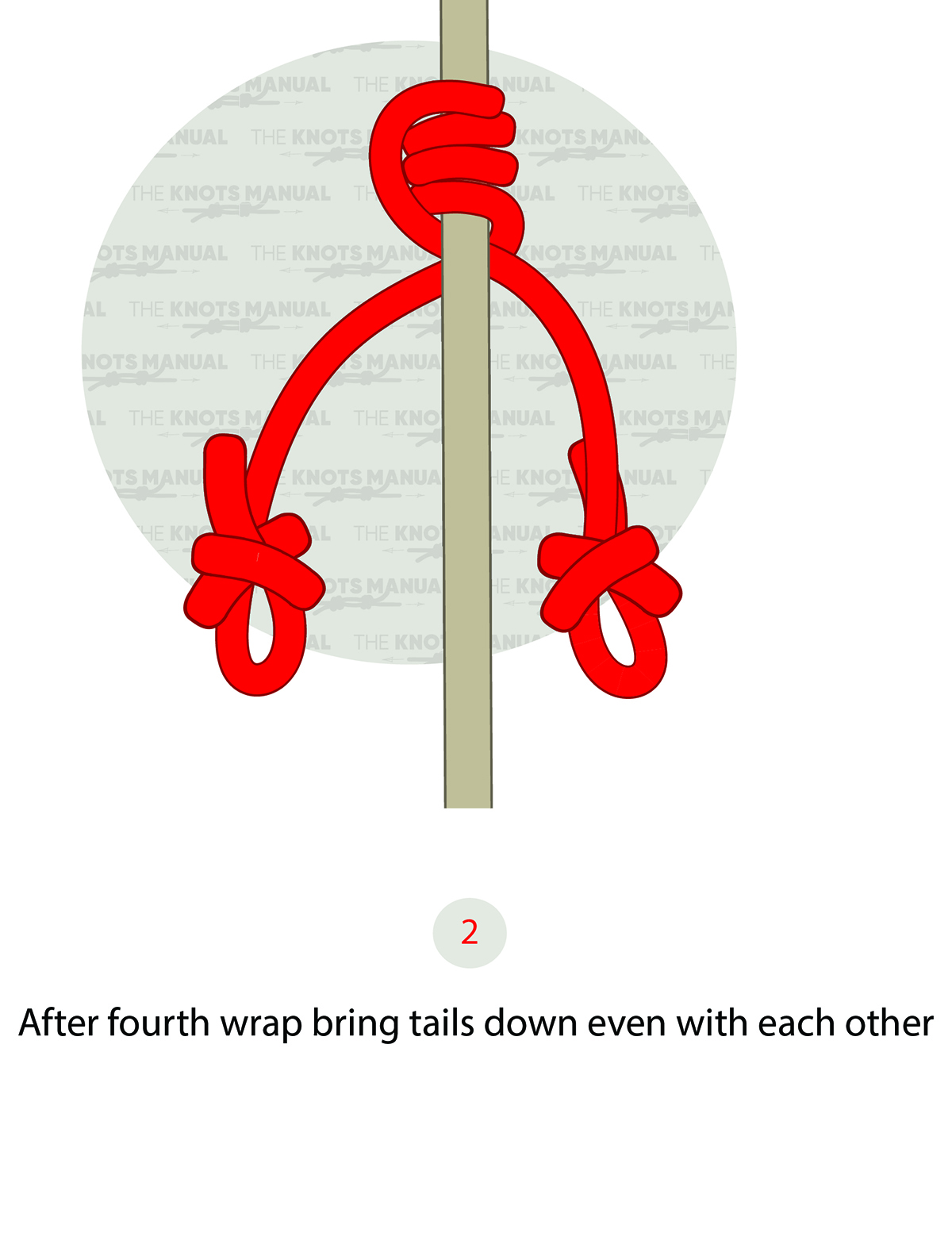
Bring both tails down, ensuring that they’re even with each other.
Step 3:
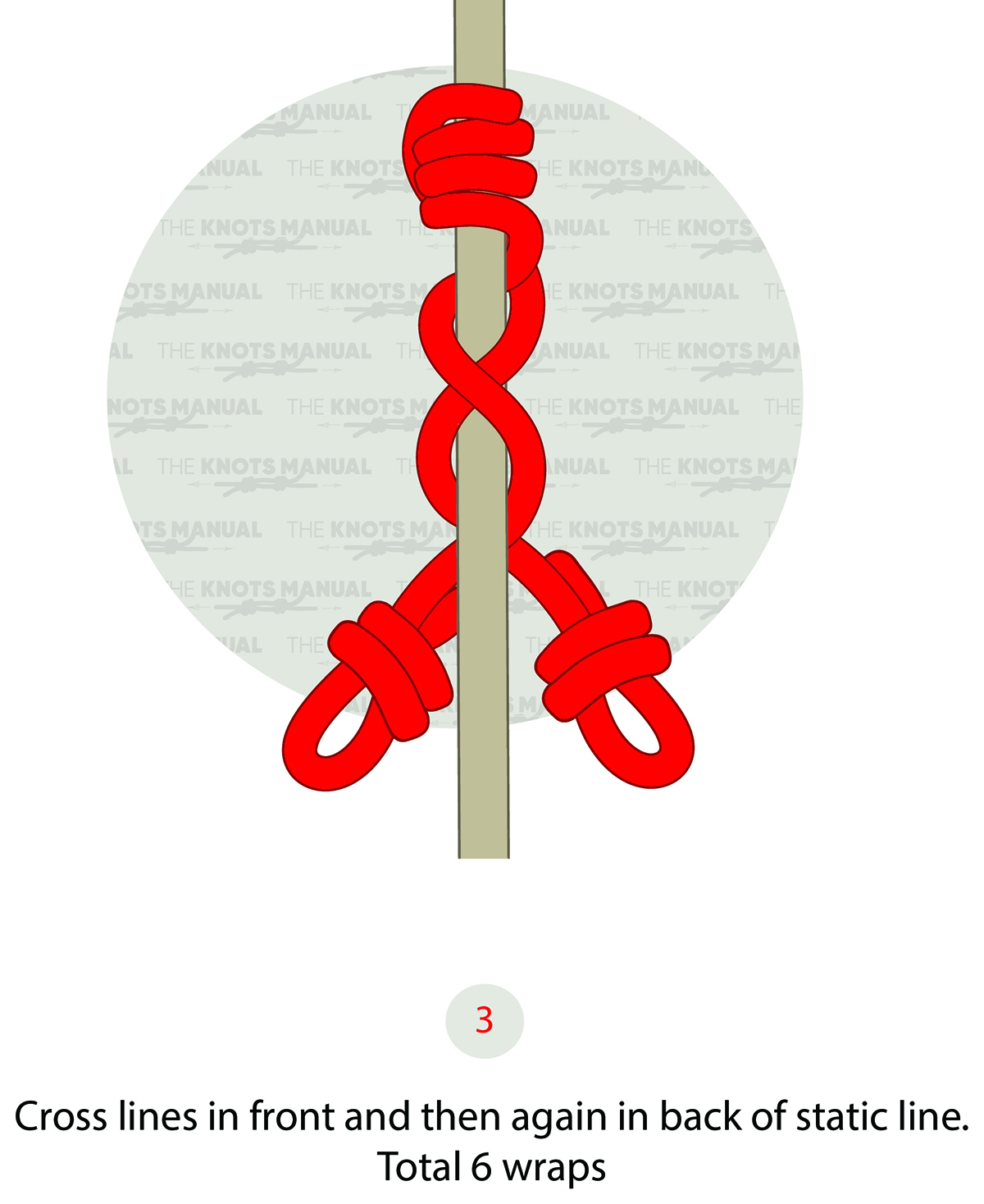
Cross the lines in the front and back of the static line.
Step 4:
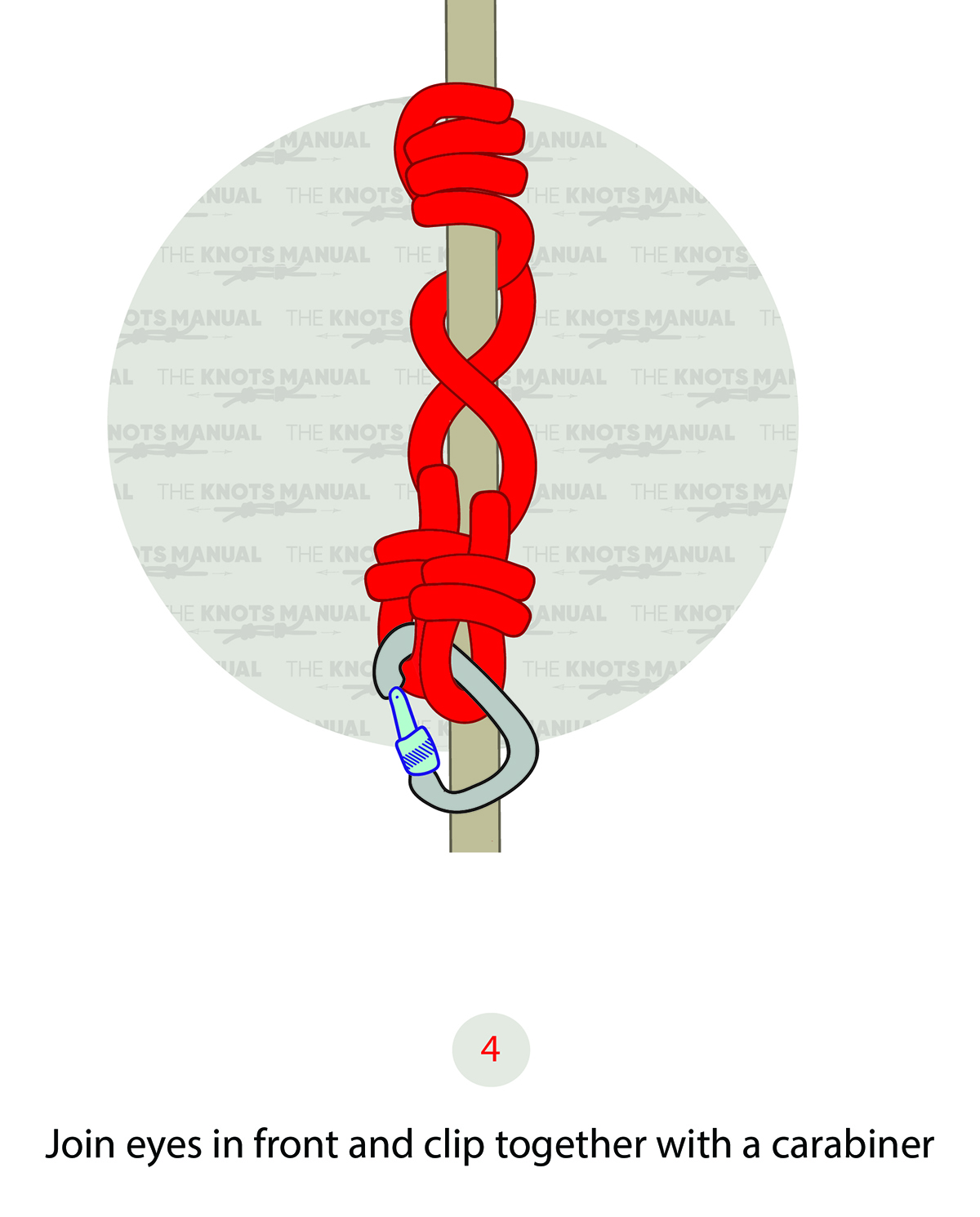
Bring the eyes to the front and secure with a carabiner.
